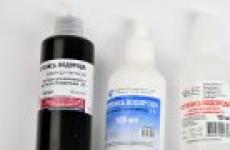Soils and soil mixtures for indoor plants. Soil for Houseplants Why Ready-Made Soil Mixes Are Not Suitable for Houseplants
To the choice of soil for plants, like no other, the expression: “Caesar’s is Caesar’s, and the clerk’s is clerk’s.” Indeed, each flower needs its own special soil. Of course, there are group features, that is, plants can be combined according to growing conditions, which means according to soil requirements. This allows you to select a mixture not for one flower, but for a group. Otherwise, transplanting and planting flowers would turn into a titanic work - try to pick up an individual mixture for each flower, verified like in a pharmacy.
Nevertheless, the health of the flower depends on what kind of soil is used. From the soil, the flower receives all the necessary nutrients. The condition of the roots and the aerial part of the plant depends on the composition of the soil. And therefore, you need to know at least the basics of soil science and the main features of selecting soil for flowers.
Acidic or alkaline?
 When do we face the issue of soil selection? When we transplant flowers or plant on permanent place. If you have such a question, first decide which of the main groups your pet belongs to. Plants are distributed in relation to the acidity of the soil. After all, the mixture can be either alkaline or acidic. But it's also not so clear cut.
When do we face the issue of soil selection? When we transplant flowers or plant on permanent place. If you have such a question, first decide which of the main groups your pet belongs to. Plants are distributed in relation to the acidity of the soil. After all, the mixture can be either alkaline or acidic. But it's also not so clear cut.
For example, some flowers require slightly acidic soil, others of medium acidity, and still others will look good if they are planted in acidic soil. Likewise with alkaline soils. Give some slightly alkaline soil, and others with a pronounced alkaline reaction. There are also supporters of neutral soil, and some plants weaken in it.
 Therefore, to select the soil, first find out what kind of reaction your flower needs.
Therefore, to select the soil, first find out what kind of reaction your flower needs.
Soil of medium acidity or acidic (pH = 4.5 - 5.5): azaleas, calla, heather, anthurium, rhododendron, ferns, fuchsia.
Slightly acidic soil (pH = 5.5 - 6.5): asparagus, begonia, pelargonium, primrose, amaryllis, aralia, ficus elastica.
Neutral soil (pH = 6.5 - 7): roses, cineraria, saxifrage, levkoy or matthiol, chrysanthemums.
Alkaline soil (pH = 7): heliotrope, calceolaria.
At home, the acidity of the soil can be easily checked with litmus paper.
Components
The reaction of the soil depends on what components are included in the earth mixture. In nature, the composition of the soil depends on environment: vegetation around, the presence of ground and surface waters and their composition, soil layers and much more. And for indoor flowers, we can pick up the components ourselves and get them either in nature or in a store (you can even buy something in a pharmacy).
So, the main components of the earth mixture: turf, leaf, manure-humus and peat land. Other important components include: river sand, bark of trees (mainly conifers), moss (sphagnum).
What is each of the components?
This is a very nutritious land. It is the result of overheating of the sod layers. They are piled up, grass to grass and shifted in layers cow dung. This "pie" is left to rot for a year. After that, use for flowers that love acidic soils. Since sod land has an acidity of pH 5-6. It is mixed with other types of earth, clay or sand.
leaf ground
It is a very light and loose earth. It passes air and water well to the roots. But the nutritional value of leafy land is average. Such land is obtained as a result of the overheating of the leaves of deciduous trees. They are collected in the autumn in a heap and left for 1-2 years. To make the process go faster, the heap layers are turned over and watered. It is also used to enhance the acid reaction.
peat land
Peat soil is especially loose and light. It is used to improve general composition soil. Peat mixtures help to ensure the mineral balance of the soil mixture. This land is obtained from peat, which has passed a decomposition period of at least a year. In floriculture, high-moor or dark transitional peat is used, which has an acidity of pH 3.5-5.5. If there is peat in the mix, you should see dark or reddish fibrous pieces. This soil is very good for seedlings, young flowers, especially all aroid ones. Philodendrons and ferns can generally live in pure peaty soil. But in order for the soil to pass water well and there is no stagnation, it is better to mix peat with other types of soil.
 coniferous land
coniferous land
This is another kind of light acidic earth that is so loved. flowering plants(for example, azaleas or anthuriums). It is a litter layer of coniferous forests (usually pine forests). Coniferous land is not taken from the very top, there are many needles that have not yet rotted. The bottom layer is used. This is a loose earth with an acidic pH of 4-5.
Manure or compost
It's very saturated nutrients earth, but very aggressive in its purest form. After adding pure humus to the soil, the thin roots of the plant can, as they say, burn. So humus must be mixed with other types of soil. Compost is obtained after decomposition (within 2-3 years) of spent greenhouse manure. Its pH is 8.
Sand
An important component of many soil mixtures is sand. Although they say that nothing grows on sand, you can’t do without it in home floriculture. For flowers, you need to use only clean river sand. In addition, it must be well washed and ignited in order to disinfect.
 Bark
Bark
Most often in floriculture, pine bark is used. It can be collected right in the forest. To disinfect and soften, the bark must be boiled for 30 minutes in water. After that, it can be cut. The bark gives the soil mixture lightness and good water permeability. It provides an acid reaction of the mixture pH 4-4.5. The bark is used to loosen the soil. This is especially required for ferns, aroids and other plants. But this component is especially important for growing orchids.
Moss (sphagnum)
This is the main component of the land mixture for epiphytic plants. Moss gives the soil hygroscopicity, friability, lightness. For use in floriculture, it is dried and finely ground. It gives an acid reaction of pH 4. They also cover the aerial roots on the trunks of plants with moss so that they do not dry out. And dug branches are well covered with moss.
 coconut fiber
coconut fiber
Now in floriculture, coconut fiber is used in crushed form. This is a substitute for peat. It well passes air into the soil. Therefore, fiber is added to the mixture for ferns and orchids.
fern roots
Fern roots are also used in substrates for orchids. They can make up 30% of the total volume of the mixture.
Perlite
This is silica, which looks like light white or gray granules. They are small in size, so perlite is sometimes even used instead of sand.
It is a mineral that has good water absorption properties. Moreover, it not only absorbs water well, but also gives it well. So in dry times, it maintains soil moisture.
These are lumps of baked clay with a porous structure. Expanded clay is used for drainage, it weakly retains water, and does not allow it to stagnate.
Zeolite granules
Zeolite is a crystalline mineral. It is used in floriculture as an adsorbent. It retains water and prevents soil from sticking together.
This is another traditional antiseptic. Coal does not allow the water in which the cuttings take root to rot. Coal is added to the soil mixture so that the roots do not rot in case of waterlogging.
Density - lightness
If you still decide not to buy a ready-made substrate, but to make the mixture yourself, you need to know what density your flower needs. Palms, oleanders and ficuses grow in dense soil. Blooming: azaleas, anthurium, violets, begonias need light soil.
And any young plants require a lighter mixture than adult specimens.
4.5 Rating 4.50 (20 votes)
After this article, they usually read
The conditions created for plants in an apartment are significantly different from the natural conditions in which these species originally grew. Therefore, for successful cultivation indoor plants it is necessary to create an environment as close as possible to the one that they require: it is necessary to maintain a suitable temperature, light, humidity and select the appropriate soil.
Let's stop at the last point. Priming!
Each type of plant grown in pots or flower beds needs a special potting mix designed specifically for it. That is why there is now a whole industry for the production of a wide variety of soils. On sale you can find soil mixtures different composition created for various indoor plants.
Consider the main components of the soil, which are used both separately and in mixtures for indoor plants.
Leaf humus is the result of the decomposition of fallen leaves. It is not used as a fertilizer, but it perfectly conditions the soil, increasing its ability to retain moisture.
Garden land
On this natural substrate, many species of trees, shrubs and herbaceous plants successfully grown in gardens.
In general, "good garden soil" refers to fertile, well-drained soil with acidity close to neutral. Its main components are sand (about 50%), silt (25-30%) and clay (15-20%), as well as at least 10-15% organic matter.
For growing indoor plants, it can be used in pure form or mixed with other components (depending on the needs). certain types plants).
Peat
Ground for bonsai.
Of all the ingredients that are included in potting mixes or used alone, peat is the most important. Peat is formed by the accumulation of plant remains that have undergone incomplete decomposition in swamp conditions. Usually it does not contain harmful substances and microorganisms, as well as weed seeds.
Depending on the color and structure, peat is conventionally divided into two groups.
White, or sphagnum, peat is most popular for growing plants in an apartment. It retains moisture while providing good airflow and moderate drainage (especially the large granule variety).
Dark peat is less suitable for indoor plants and is used in mixtures with materials that facilitate drainage (for example, sand, agroperlite, polystyrene). This peat makes the soil lighter and therefore more suitable for sowing seeds, planting cuttings and growing young plants.
Peat has hyperacidity, its pH is from 3.5 to 4, however, most plant species, with the exception of acid-loving ones, require an acidity level ranging from 5.5 to 6. Calcium carbonate (3 kg per m3) can be used to reduce acidity. With the help of peat, especially coarse grinding, insufficiently acidic or soft soil can be improved.
porous clay
Do not confuse porous and dense clay, the latter is not suitable for growing indoor plants. Porous clay serves to compact too light soil (in particular, peat) and increase its ability to retain moisture.
Humus
Humus is a substance of organic origin obtained by fermenting and processing the fallen leaves of trees, especially beech and pine needles, into a mineralized substance. Manure can be used alone or mixed with peat for all plants that require soft, light and nutrient-rich soil.
Humus from pine needles is more suitable for growing bromeliads, azaleas, rhododendrons and heathers. In this case, it is desirable to avoid humus from the needles. coniferous plants belonging to the genera Picea and Abies (spruce and fir), because they contain an excess amount of resin.
Bark
Pine bark.
Usually used is the bark of trees belonging to the genera pine, spruce, fir, pseudo-hemlock and oak. If the resin is removed from the bark, it can improve water absorption and air access to the roots. The bark has a good ability to retain moisture. When making an epiphyte or semi-epiphyte mixture, it is usually mixed with peat, polystyrene or polyurethane foam.
Sand
In its pure form, sand can be used to germinate seeds or plant cuttings. It can be used to correct the properties of peat or other organic materials in order to obtain a mixture with good drainage properties. River sand is best suited for this purpose. light gray no admixture of gravel or silt.
Vermiculite and perlite
Perlite.
These natural inorganic materials obtained from certain rocks and used in a mixture with organic materials (mainly peat). Vermiculite and perlite give the soil softness, permeability and improve air access. They are suitable for the soil in which seeds are germinated and cuttings are rooted.
Polystyrene
Polystyrene - plastic material in the form of granules different sizes, which is produced industrial way. It helps to improve the reclamation characteristics of the soil, making it light and drainable. Polystyrene is mainly used in the manufacture of soil mixture for epiphytes (for example, for some types of orchids). This potting mix can be improved by adding pounded polyurethane foam, which, unlike polystyrene, has a moderate water retention capacity.
Based on materials from the magazine Houseplants from A to Z.
- it's fast. Soils, universal or specially formulated for individual crops, are made from peat with the addition of macro- and microelements. An "average" set of fertilizers, more or less meeting the needs of most crops, is part of universal soils - they are convenient if there are "every creature in pairs" on your windowsill. If the collection is dominated by representatives of one or more species or families, give preference to special soils that are balanced taking into account the characteristics of these plants.
On the one hand, peat soil seems to be the easiest to use: bought, poured, planted - and you don’t need to understand anything. But it is inexperienced growers who should think carefully before making such a choice. Peat is a very moisture-absorbing material. Drying, it loses volume ("shrinks") and lags behind the walls of the pot.
In addition, dry peat is poorly wetted: water rolls over its surface without being absorbed. Late watering will have no effect until you can soak it properly. Is it worth explaining how plants suffer in this case? Growing plants in such a substrate is the lot of disciplined owners who do everything on time and correctly.
Charcoal. Birch or aspen charcoal can be collected in an extinct fire. Grilled charcoal will work too. It is crushed into pieces about a centimeter and mixed in a small amount with soil mixtures. Promotes friability and water permeability of the soil, prevents acidification of the earth.
Additional components
Horn meal, shavings, horn-hoof meal. Valuable slow acting. Can be found for sale in flower shops and garden centers. It is added to earth mixtures at the rate of 1 part per 30 parts of earth.
. Contains a lot of potassium, normalizes the acidity of the soil. Hardwood stove ash (sometimes sold at garden centers) is suitable as a soil additive. Added at the rate of 1 part per 50 parts of land.
It should be noted right away that it is wrong to call the substrate in a pot soil. Soil is a single living organism, consisting of connected layers (horizons) and formed on a certain parent rock, depending on the climate, topography and activity of soil organisms over a long period of time. So the soil becomes fertile and able to recreate itself. As soon as we take a piece of soil and carry it home, it immediately turns into a kind of more or less fertile substrate. Therefore, we will call the substance in the pot soil or substrate. Its main purpose is to support the plant and conduct water to the roots and nutrients to allow air to enter. Providing plants with nutrition is not the primary function of soils, and our task is to timely and correctly introduce nutrients into the substrate. Soils can be made not only from natural materials taken from nature, but also from artificial ones, for example, hydrogel, perlite or expanded clay - with a hydroponic growing method.
When choosing soil for a particular plant, it is necessary to understand what kind of soil it needs in terms of composition and acidity. For this it is useful to read specialized literature, it is advisable to familiarize yourself with the biology and growing conditions of your favorite plant.
Despite the wide variety of soils on store shelves, almost all of them are divided into several groups. During the production process, acidity regulating substances, fertilizers (usually long-acting), sometimes sand, expanded clay chips, perlite and other components are added.

Soils based on high-moor peat. They are probably the majority. Raised peat is the result of the decomposition of sphagnum moss that grows in raised bogs. He is poor minerals, after extraction quickly loses fertility. Based on it, a transport soil was prepared, in which plants are transported, and which is also used by our nurseries. Its advantage is lightness, hygroscopicity, breathability. The disadvantages include such a high ability to retain water that at a certain soil moisture, the roots no longer absorb it; on the contrary, after complete drying, it is difficult to wet it. Soils based on high-moor peat serve as a substrate for almost all indoor flowers.
Soils based on lowland peat. Such peat is extracted from lowland swamps, wetlands of rivers and lakes. It is heavy, richer in minerals, which, however, are released slowly. In its pure form, it is better not to use it for transplanting indoor flowers, as it remains wet for a long time, has a fine structure and quickly cakes, making it difficult for air to reach the roots and causing them to rot. It can only be used as a component in the preparation of land mixtures.
Soils based on biohumus. Biohumus is obtained by processing manure by certain lines of earthworms, it contains not only high percent organic matter but also beneficial live microorganisms. It is used in small quantities to enrich the earth mixture, it can serve as a substitute for leaf or herbal humus.
Many manufacturers offer ready-made soils for different groups plants, however, you should check the recommendations for the composition of the soil for a particular plant species. Sometimes it is necessary to make adjustments, for this it is advisable to always have a few more components on hand to prepare the soil that is optimal in composition for a particular plant.
For this you may need:
- sand, which is desirable to take in unpolluted places along the banks of rivers, but can also be bought in flower shops. Sand should be sifted through a sieve to get rid of debris and large stones, and washed in water to remove dust and dirt. It serves as a good additional additive to prepared soils for cacti and succulents, palm trees and other plants, prevents them from caking.
- sphagnum moss sold in flower shops, its pH is about 4. It is added to prepare loose, light, breathable acidic substrates for Uzambara violets and other representatives of Gesneriaceae, for aroids, orchids, azaleas.
- pine bark, which can be bought in a store or collected from cut down plants, has a pH of 4-4.5. Before use, it must be boiled for at least 30 minutes. It is added to soils for epiphytes, bromeliads, anthuriums, philodendrons and other plants that need a loose, moist substrate. Serves as the only soil component for some orchids, including phalaenopsis.
- coniferous land going under coniferous trees, contains fallen and partially rotted needles. Cones and branches that have fallen into it should be removed. It is a loose, poor, acidic soil with a pH of 4-5. Serves integral part for plants that prefer an acidic soil reaction and require increased friability of the substrate, for example, for precious orchids.
- herbal or leaf humus formed by decay of leaves or grass, pH 5-6. Replaces rotted manure, which should not be used for indoor flowers. It serves as a component for soil mixtures for plants that need enhanced organic nutrition, such as ferns, etc. Biohumus can serve as an adequate substitute for it.
- sod land It is formed when turf is composted, but it can be collected in the forest from fresh molehills, where the earth is loose and contains practically no debris and plant roots. AT middle lane soddy land is usually loam. Not a large number of clay helps to structure the soil and retain moisture. Clay, due to its layered structure, retains ions on itself, does not allow nutrients to quickly wash out, thereby reducing the amount of top dressing. Under young plants, when transplanting, add a little sod land, increasing its share as it grows. It is a good soil component for palms and other plants. It is advisable to add soddy soil to prevent rapid (during the day) drying of the substrate, especially when keeping plants on the balcony in summer.
- charcoal sold in flower shops, included in the substrates for orchids, bromeliads and other plants, it should be added to fresh soil when transplanting in case of root rot. They are sprinkled with wounds and cuts on the roots, stems and leaves to prevent the development of rot.
|
|
Guided by knowledge of the needs of plants and having ready-made purchased substrates and additional components, you can prepare a soil mixture for almost all indoor flowers. Sometimes perlite, vermiculite, polystyrene are also used, mineral wool, foam.

Before use, the soil must be subjected to heat treatment, this will save in the future from problems with root nematodes, earthworms, centipedes and other soil inhabitants. A simple way is to place washed raw sand on the bottom of a large saucepan with a layer of several centimeters, and on top of it - the other components of the mixture. The pot is placed on the stove and heated. Water evaporating from the bottom layer of sand in the form of steam heats up the rest of the soil volume. Steam should be until the top layer is heated (a 10-liter pan warms up in about 40-60 minutes).
But heat treatment leads to the inevitable death of beneficial soil microorganisms, and without their vital activity, plants cannot absorb organic fertilizers. About a month after transplantation, when the roots are fully restored, you should begin to populate the soil with special microorganisms and constantly maintain their numbers. This will help special preparations containing live microorganisms, such as Baikal, Vozrozhdenie, Vostok EM-1, as well as organic fertilizers of the Ecostyle brand, containing soil microflora.
Specialized soils for indoor plants
Soil for cacti and succulents
The main requirements for this soil are water permeability and nutrient poverty. Such soils contain a large amount of sand (about half), the rest may be high-moor peat, leafy soil. For cacti, you can add a little more coarse sand to the purchased soil.
For a group of forest cacti, a universal soil based on high-moor peat is quite suitable.
soil for orchids
Purchased soils for orchids usually contain several components - peat, sphagnum, coal, bark. It is with these substrates that the greatest confusion occurs. There is no single soil for orchids, since among them there are groups of different habitats. For ground orchids, the purchased soil meets the requirements, but there are epiphytic orchids that live on trees, such soil is categorically not suitable for them. For this group it is necessary to use only bark, sometimes sphagnum moss and coal, but in no case should peat be added. It is easier to buy separately the bark of the desired fraction and, after boiling, plant an orchid in it.
Soil for orchids with the addition of high-moor peat (1: 1) is optimal for anthuriums, philodendrons, monstera, bromeliads.
soil for bromeliads
Such soils consist mainly of high-moor peat with the addition of leafy earth and sand. To give more looseness, you can add small pieces of bark, chopped sphagnum, coniferous soil, as well as coal, or prepare it on the basis of orchid soil, adding about half of the universal soil based on high-moor peat.
Soil for palm trees
All palm trees love loose and breathable soil; substrates based on high-moor peat with the addition of sand, leafy and sod land are suitable for them. As the palm tree grows, more and more sod land is added to the substrate.
Soil for ferns
Ferns in nature grow in very loose, moist, organic-rich soil. For the preparation of the mixture, it is possible to soil for succulents (peat, sand and low content mineral fertilizers) add leaf humus or soil based on biohumus (1: 1).
Ground for uzambar violets and other gesneriaceae
For this group of plants, an acidic substrate based on high-moor peat is optimal. It is advisable to add a little sand or perlite, coniferous earth, coal, for greater moisture capacity and friability, it is good to add chopped sphagnum.
Ground for gardenias
It is desirable to add approximately equal parts of leafy soil (or humus soil) and coniferous soil to a purchased substrate for gardenias, consisting of high-moor peat and sand. Be sure to use only acidic mixtures.










